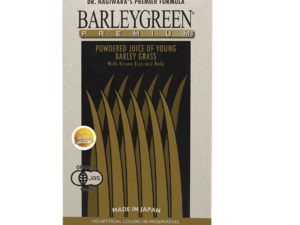Did you know nearly 1 in 3 adults experience digestive discomfort after boosting their fiber intake? While fiber is vital for gut health, overdoing it—or introducing it too quickly—can trigger bloating, gas, and abdominal pain. Wellness Group understands this delicate balance and offers science-backed strategies to help people enjoy fiber’s benefits without the discomfort.
According to dietary guidelines, consuming more than 14 grams of fiber per 1,000 calories daily often leads to gastrointestinal issues. This is especially common in Malaysia, where traditional dishes like ulam or roti canai naturally pack fiber-rich ingredients. Wellness Group’s experts emphasize that gradual adjustments and understanding fiber types—soluble versus insoluble—are key to avoiding cramps.
Their personalized approach helps individuals pinpoint triggers, adapt meal plans, and distinguish normal adjustment symptoms from serious conditions. By blending cultural dietary preferences with modern nutrition science, they empower people to maintain wellness while minimizing discomfort.
Key Takeaways
- Sudden increases in fiber intake often cause bloating or cramps.
- Soluble and insoluble fibers affect digestion differently.
- Gradual dietary changes reduce discomfort risks.
- Professional guidance helps identify root causes of pain.
- Balancing fiber supports long-term digestive health.
Understanding Fiber and Its Impact on Digestive Health
Many people underestimate how different fiber varieties work in the body. This natural component of plant-based foods acts like a multitool for wellness—it scrubs the digestive tract, feeds good microbes, and even helps manage hunger. But not all fibers function the same way.
What is Fiber and Why It Matters

Click to LEARN MORE
Dietary fiber splits into two main categories. Insoluble fiber, found in veggie skins and whole grains, acts like a broom—it sweeps waste through the intestines. Soluble fiber, present in oats and beans, dissolves into a gel that slows digestion. Both types team up to support regular bowel movements and stabilize blood sugar.
“Think of fiber as fertilizer for your gut garden—it helps good bacteria thrive, which strengthens your entire digestive system.”
| Type | Primary Role | Common Sources |
|---|---|---|
| Insoluble | Adds bulk to stool | Brown rice, celery |
| Soluble | Softens stool texture | Chia seeds, lentils |
Common Digestive Symptoms from High Fiber Intake
When increasing fiber too quickly, many experience gas or bloating. These reactions often mean your gut bacteria are adapting. For Malaysians enjoying local favorites like kacang merah or barley drinks, gradual changes prevent discomfort.
Persistent issues might signal a need for balance. Identifying fiber deficiency requires understanding both intake levels and your body’s responses. Most symptoms ease within weeks as the digestive system adjusts.
Recognizing Stomach Cramps from Fiber-Related Causes
Have you ever felt a sharp pinch in your abdomen after enjoying a fiber-packed meal? This common reaction often signals your body needs help processing dietary changes. While fiber supports digestion, exceeding personal tolerance levels can turn beneficial foods into sources of discomfort.

How Too Much Fiber Affects Digestion
Eating much fiber quickly overwhelms the gut. Insoluble varieties add bulk, forcing intestinal muscles to work harder. Soluble types absorb water and ferment, producing gas. Together, these effects create pressure that may lead to:
- Temporary constipation as stools become dense
- Bloating from trapped gas bubbles
- Sharp pains during bowel movements
Spotting the Warning Signs
Mild gurgling after lentil curry or oats is normal. But persistent issues lasting over 72 hours often indicate overload. Track these symptoms:
| Normal Adjustment | Fiber Overload |
|---|---|
| Mild gas for 1-2 days | Constant bloating |
| Soft stool changes | Hard, dry bowel movements |
| Occasional hunger pangs | Cramps after every high-fiber meal |
Timing matters—spreading fiber intake across meals reduces strain. If discomfort persists despite adjustments, consider evaluating your total daily consumption with a nutrition expert.
Reduces stomach cramps from fiber
While 95% of adults fall short of their daily fiber needs, going from zero to hero overnight often backfires. Finding the sweet spot between deficiency and overload requires careful planning. Wellness Group’s approach focuses on personalized thresholds that align with biological needs and lifestyle factors.
How Proper Fiber Management Eases Discomfort
Start by calculating needs using the USDA’s 14-grams-per-1000-calories rule. A 2000-calorie diet would need 28 grams daily—close to women’s 25g baseline. This table simplifies targets:
| Group | Minimum | Ideal Range |
|---|---|---|
| Women | 25g | 25-30g/day |
| Men | 38g | 38-45g/day |
Boost intake gradually—add 3-5 grams every three days. Pair lentils with rice at lunch before introducing oats for breakfast. This phased approach lets gut bacteria adapt without rebellion.
Spread consumption across meals. A roti canai breakfast (4g), veggie-packed lunch (10g), and bean soup dinner (8g) totals 22g—safer than eating much at once. Track portions using apps or handwritten logs to stay within limits.
“Consistency beats intensity. Small daily improvements create lasting digestive harmony.”
Stay hydrated—each gram of soluble fiber needs 50ml of water. For 30g daily, drink 1.5 liters minimum. This prevents the “concrete effect” when fiber hardens in dry intestines.
Expert Guidance by Wellness Group
Finding the right support for digestive wellness can transform how your body handles nutritional changes. Wellness Group bridges the gap between scientific knowledge and practical daily habits, offering tailored solutions for those navigating dietary adjustments.

Contact Details and Business Hours
Reaching out for professional advice is simple. Connect directly with Wellness Group’s health specialists via WhatsApp at +60123822655. Their team operates during flexible hours:
| Days | Hours |
|---|---|
| Weekdays | 9:30 am – 6:30 pm |
| Weekends | 10 am – 5 pm |

Click to LEARN MORE
This schedule accommodates busy lifestyles while ensuring people receive timely support. Whether you’re adjusting your diet or managing chronic issues, their experts provide clarity without long wait times.
Wellness Group's Approach to Digestive Health
Their methodology goes beyond generic advice. By analyzing three core elements—medical history, current diet, and activity levels—they create actionable plans that respect individual needs. One client shared:
“They helped me identify hidden triggers in my meals while keeping my favorite local dishes part of the solution.”
This personalized strategy helps people achieve lasting results. Doctors at the practice emphasize education, teaching clients to recognize how specific foods interact with their unique biology. For complex cases, they collaborate with gastroenterologists to rule out underlying conditions.
Wellness Group’s evidence-based guidance empowers Malaysians to take charge of their health confidently. Whether through meal timing adjustments or hydration strategies, their solutions fit seamlessly into diverse lifestyles.
Step-by-Step Guide to Managing Fiber Intake
Are you struggling to enjoy fiber-rich meals without discomfort? For Malaysians savoring dishes like nasi kerabu or sup kacang merah, a strategic approach makes all the difference. Let’s explore practical methods to adapt your diet smoothly.
Gradual Increase and Balance in Fiber Consumption
Start small. Add just 2-3 grams of fiber daily—equivalent to half a cup of spinach or one slice of whole-grain bread. Sensitive individuals should slow this pace, introducing one new high-fiber food every 2-3 days. This table outlines a safe progression:
| Day | Standard Plan | Sensitive Plan |
|---|---|---|
| 1-3 | +2g/day (berries) | +1g/day (1/4 avocado) |
| 4-6 | +3g/day (oatmeal) | +1g every 2 days (lentils) |
| 7+ | Adjust based on tolerance | Monitor symptoms closely |
Mix soluble and insoluble fibers to prevent strain. Pair ulam (insoluble) with barley drinks (soluble) for balanced meals. Track reactions using a food diary to spot patterns.
Integrating More Fluids and Regular Exercise
Water acts as fiber’s partner—aim for 1.5-2 liters daily when increasing intake. For every gram of added fiber, drink an extra 50ml. Try these hydration strategies:
- Start mornings with warm water + lime
- Carry a reusable bottle during mamak outings
Physical activity boosts digestion. A 20-minute walk after teh tarik sessions or yoga stretches can ease gut movement. Consistency matters most—small daily efforts create lasting results.
Dietary Solutions and Practical Safety Tips
Struggling to enjoy your favorite fiber-rich meals without discomfort? Let’s explore smart strategies that keep your plate diverse and your digestion comfortable. The key lies in balancing fiber types and knowing when to adjust intake.
Balancing Soluble and Insoluble Fiber Types
Think of soluble and insoluble fibers as dance partners—they work best together. Soluble varieties (like oats and bananas) soften stools, while insoluble types (found in brown rice and cucumber skins) keep things moving. This table shows ideal pairings for Malaysian meals:
| Soluble Sources | Insoluble Sources |
|---|---|
| Barley drinks | Ulam leaves |
| Red bean soup | Whole-grain roti |
Chefs recommend peeling vegetables or soaking legumes overnight to ease digestion. As research shows, whole food sources often provide better nutrient absorption than supplements.
Implementing a Low Fiber Diet When Needed
For temporary relief during flare-ups, try these gut-friendly swaps:
- Choose white rice over brown rice
- Opt for peeled, well-cooked carrots
- Select apple juice instead of whole apples
This approach gives overworked intestines a break. Most people can return to regular fiber intake within 2-4 weeks. Remember: Supplements should complement—not replace—natural sources like nuts and seeds.
When to Consult a Health Professional
How do you know when digestive discomfort crosses into danger territory? While occasional gassiness after eating fiber-rich meals is common, certain red flags demand professional evaluation. Wellness Group’s clinical team emphasizes that understanding your body’s signals can prevent minor issues from escalating.
Recognizing When Symptoms Warrant Medical Advice
Seek immediate help if you experience:
| Normal Reactions | Emergency Signs |
|---|---|
| Mild bloating for 1-2 days | Persistent vomiting |
| Temporary stool changes | Fever above 38°C |
| Brief hunger pangs | No bowel movement for 3+ days |
These severe symptoms could indicate intestinal blockages or infections. Diabetics should be particularly cautious—nerve damage from this disease often slows digestion, complicating fiber processing.
Special Considerations for IBS and Other Conditions
For those with irritable bowel syndrome, fiber needs differ. Surprisingly, increasing soluble types often eases symptoms. As Dr. Amirah Yusof explains:
“Many IBS patients benefit from controlled fiber boosts—it’s about choosing gut-friendly sources like psyllium husk.”
Small intestinal bacterial overgrowth (SIBO) requires special attention. Untreated SIBO makes high-fiber diets intolerable until antibiotics rebalance gut flora. Always consult a doctor before making dietary changes if you have chronic conditions.
Conclusion
Balancing fiber’s benefits with digestive comfort requires smart strategies. While temporary discomfort may occur when boosting intake, research shows populations consuming over 50 grams daily experience 40% lower colon cancer risk compared to low-fiber diets. This nutrient fuels gut health and helps manage blood sugar—but like any powerful tool, it works best with proper handling.
Gradual adjustments prove crucial. Adding just 3-5 grams every few days allows the body to adapt smoothly. Pairing this approach with adequate hydration minimizes common symptoms like gas or irregular bowel movements. For Malaysians enjoying local staples like kacang merah, patience pays off as the digestive system recalibrates.
Wellness Group’s tailored guidance helps individuals navigate these changes confidently. Their methods blend cultural food preferences with science-backed thresholds, ensuring people reap fiber’s protective effects without disruption. Most digestive reactions fade within weeks when managed properly.
Ultimately, understanding personal tolerance levels unlocks fiber’s full potential. With mindful consumption and expert support, everyone can enjoy its disease-fighting benefits while keeping meals comfortable and satisfying.
FAQ
What are the benefits of fiber for digestive health?
Fiber supports gut health by promoting regular bowel movements, feeding beneficial gut bacteria, and aiding in blood sugar management. It also helps lower the risk of heart disease and certain cancers when consumed in balanced amounts.
Can too much fiber cause abdominal pain?
Yes, excessive fiber intake—especially without adequate water—can lead to bloating, gas, or cramps. Gradually increasing fiber and pairing it with fluids helps the body adjust without discomfort.
How does soluble fiber differ from insoluble fiber?
Soluble fiber (found in oats, beans) dissolves in water to form a gel-like substance, aiding digestion. Insoluble fiber (in whole grains, vegetables) adds bulk to stool. Balancing both types supports smoother digestion.
What are signs someone should reduce their fiber intake?
Persistent bloating, cramping, or constipation after eating high-fiber foods like lentils or broccoli may indicate overload. Temporarily opting for low-fiber options like white rice or peeled fruits can ease symptoms.
How can people with IBS manage fiber safely?
Those with irritable bowel syndrome may benefit from low-FODMAP diets, which limit certain fermentable fibers. Working with a dietitian or clinic like Wellness Group ensures personalized plans to avoid triggers.
Does exercise help reduce fiber-related discomfort?
Light physical activity, like walking or yoga, stimulates digestion and helps move fiber through the gut. Pairing movement with hydration optimizes nutrient absorption and minimizes cramps.
When should someone consult a doctor about fiber issues?
Severe pain, unexplained weight loss, or blood in stool require immediate medical attention. Chronic symptoms despite dietary adjustments may signal conditions like Crohn’s disease or celiac disease.
Are fiber supplements a good alternative to whole foods?
Supplements like Metamucil can help, but whole foods provide additional nutrients. Introduce supplements slowly and consult a healthcare provider to avoid sudden digestive changes.






